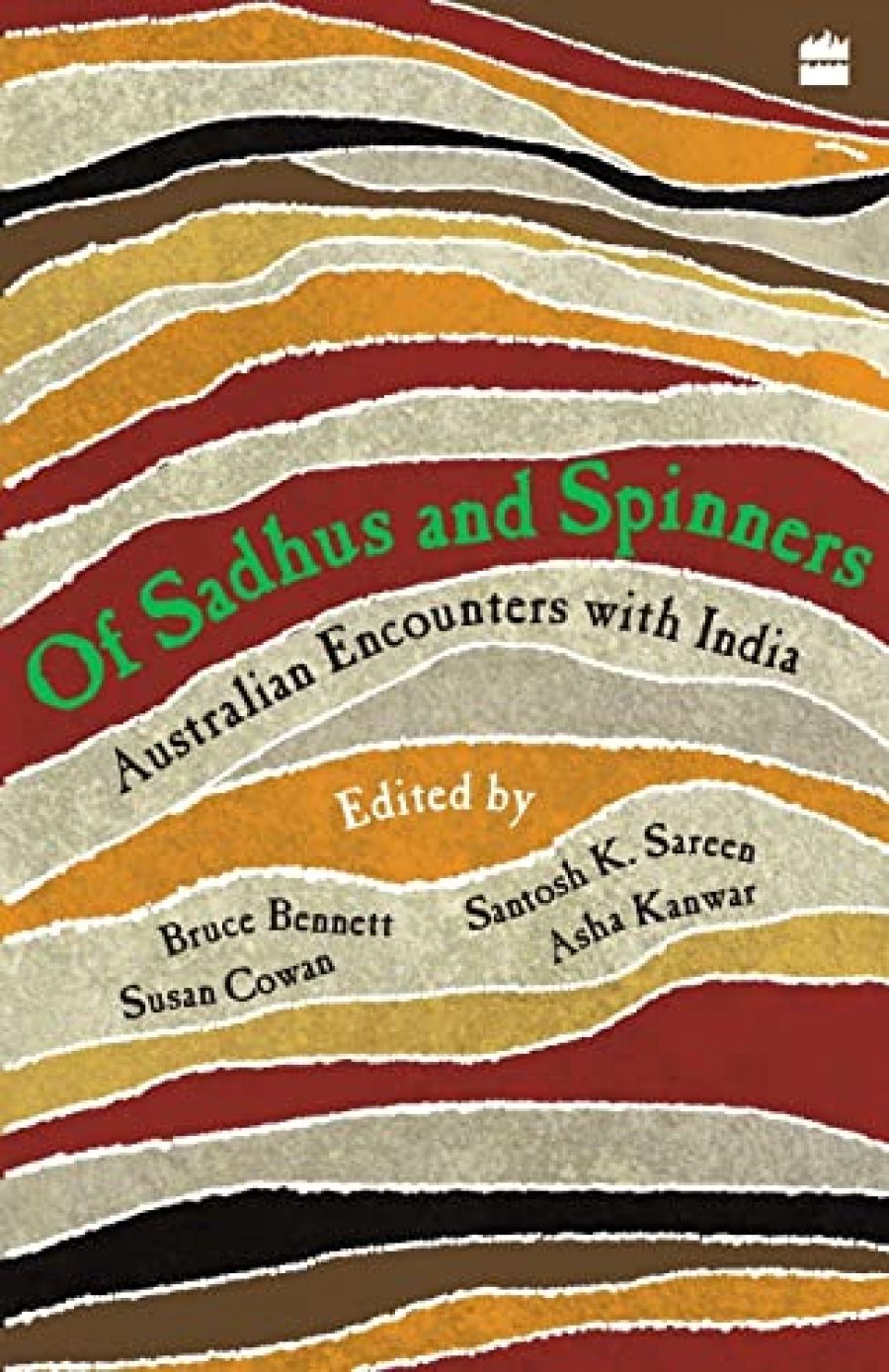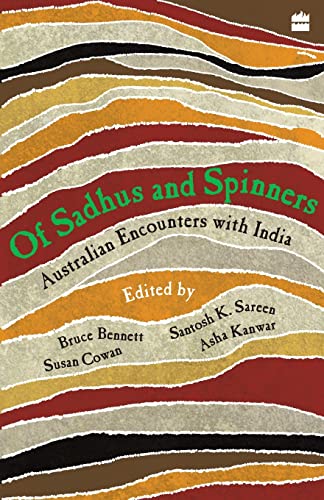
- Free Article: No
- Contents Category: Short Stories
- Review Article: Yes
- Article Title: India's teeming plenitude
- Online Only: No
- Custom Highlight Text:
Of Sadhus and Spinners: Australian Encounters with India has been assembled by several of the stalwarts of this particular cultural exchange, all based in Australian or Indian universities. Bruce Bennett and Santosh Sareen have played leading roles over the last two or three decades in establishing Australian Studies in India, most notably through the Indian Association for the Study of Australian Literature.
- Book 1 Title: Of Sadhus and Spinners
- Book 1 Subtitle: Australian Encounters with India
- Book 1 Biblio: HarperCollins Publishers India, $25.95 pb, 206 pp
- Book 1 Cover Small (400 x 600):

There are twenty-two pieces in Of Sadhus and Spinners: the majority are short stories, with one or two travel pieces and extracts from novels. The range reflects the ebb and flow in Australian writing about India: there is a cluster of pieces from the period 1890–1930, and an increasing number from the 1970s onwards, coinciding with the era of cheaper international travel.
Quibbles aside about writers who have missed out – I would have liked to see selections from Janette Turner Hospital and Gregory David Roberts – this is a very readable cross-section of Australia–India encounters. The book opens with one of John Lang’s short stories, ‘The Mohammedan Mother’. Lang, born in Australia, lived for many years in India, where he ran a successful newspaper in which he published many poems, short stories and serialised novels. His Indian writing is increasingly better known, thanks to the sterling work done by Victor Crittenden and Rory Medcalf; the example here is one of a number of pieces Lang wrote about transracial relationships.
A piece to read alongside Lang’s is Ethel Anderson’s ‘Mrs James Greene’, first published in 1959. Set during the Sepoy Mutiny in 1857, it begins as a seemingly typical piece reflecting the growing racism in the nineteenth century and the hardening of British racial attitudes. It represents the experiences of a sixteen-year-old British married woman in a remote cantonment in Oudh when the sowars rose up against their officers and their families. Mrs Greene finds refuge in the zenana of Mirza Khan, a soldier in the East India Company army, but in a surprising twist she never rejoins British society after the crushing of the mutiny, ending her days as a devoted carer for the old soldier.
A number of the later selections were written by individuals of South Asian background, representing life in Australia (and Fiji) from richly cross-cultural perspectives. There is a fine piece, ‘Kumari’, by the remarkable Mena Abdulla (with Ray Mathew). Satendra Nandan’s ‘The Guru’ is such an energetic and linguistically rich evocation of Indo–Fijian life that it needs a glossary. Manik Datar’s ‘My Sister’s Mother’ is about the experience of Indian migration to Australia, when basic ingredients for Indian cuisine were not available: the narrator remembers her mother experimenting with using rhubarb in dhal.
In the majority of the contributions, the point of view is that of the wanderer or stroller or tourist. While most of the pieces are by Australian writers visiting India, there are one or two examples written by residents. R. Francis Strangman’s ‘Black and White’ is about an Australian working in the Indian civil service in the 1920s, discussing the White Australia Policy with his bearer. In contrast, ‘A Democrat on the Ganges’ is a funny piece by Manning Clark about the Indian travels of Jack and Val Howell, two ‘decent democrats [and] crusaders of goodwill’ who travel first class around India.
Other pieces reflect something of E.M. Forster’s sense of the glorious muddle of India. A vivid and memorable extract from Christopher Koch’s novel Across the Sea Wall (1965) conveys sensory overload: ‘Vulgar and delicious odours of cheap cigarettes, and of incense … India’s female reek … From scratchy radios came the wail of music, the plaintive voices of the singers breaking off on ascending phrases to send a shiver through the groin.’
Haydn Williams’s ‘Meeting Mr Ghosh’ captures this vivid picture of Kolkata: ‘the great awkwardly absurd overcrowded city of dreadful night … a desolation of hoardings and small suburbs crisscrossing the sea of … taxis, bullock carts and rickshaws … an amalgam of hurtling horn-blowers, screaming trams bearing overloads of clinging commuters, like maggots riding overripe cheeses [and] tottering crammed buses.’
There is only one piece about cricket, by Dal Stivens, in which Australian players out in the middle begin to see things as the Indian spinner Jai Singh weaves his magic.
This important and very readable collection demonstrates the diversity of responses that Australians have made to the experiences of India. It reminds us that, as David Malouf notes in ‘A Foot in the Stream’, ‘[t]his promiscuousness of India, its teeming plenitude, far from being oppressive, seems invigorating. It humbles but lifts the spirit. It seems immemorial, endless, indestructible. Things have been like this forever, and will go on like this, in defiance of every catastrophe, into a future too remote to contemplate. We will survive here, we humans, one species among many – that is what India promises.’


Comments powered by CComment